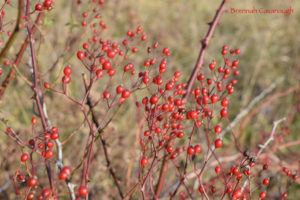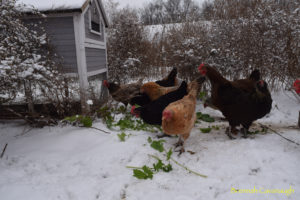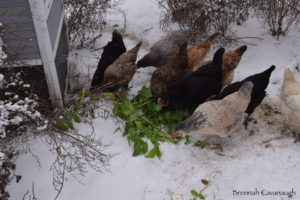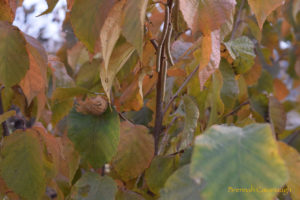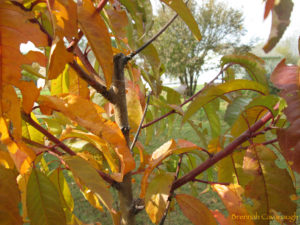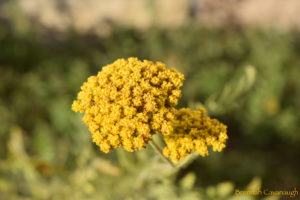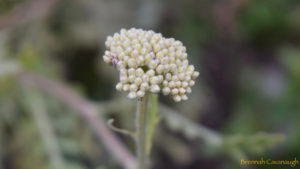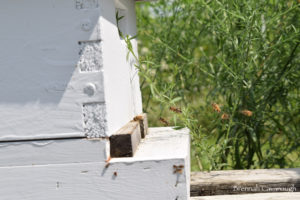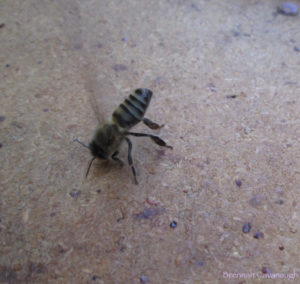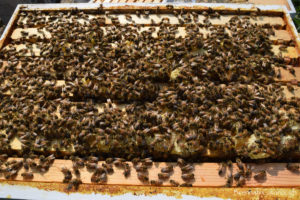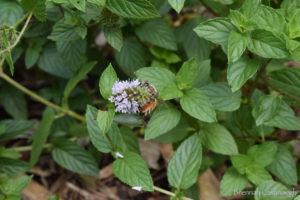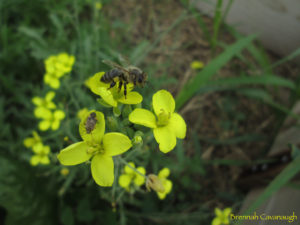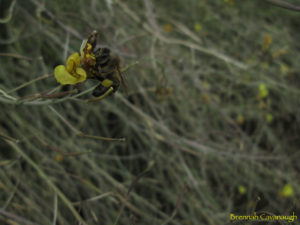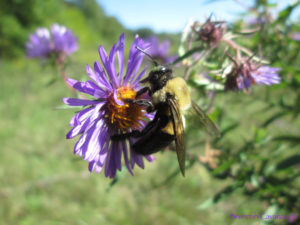Today was a warm day; in the upper fifties, and the bees were flying. They seem to appreciate a chance to come out during the winter (even if it isn’t technically winter yet, it is for them now). They usually start coming out of their hives at around fifty degrees, but the wind, sun, clouds, and their own level of need all have an effect, so there is no exact temperature that draws them out. If it is a sunny, calm day and they’ve been cooped up for a long time, they may well come out if it is only just above freezing.
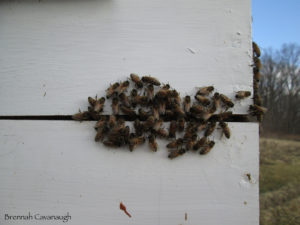
A few days like this, scattered throughout the winter, are definitely beneficial for the bees. Bees are cleanly creatures, and they don’t poop inside their hives. Warm days allow them to leave and make ‘cleansing flights’ which is the term for the flights they make in winter solely to relieve themselves. Warmer days also allow them to clean out any bees that have died while they are in their winter cluster. There are always some bees dying in a normal honey bee colony, but in winter, they almost always die inside the hive, and then have to be removed.
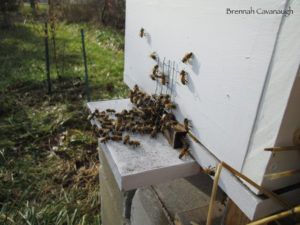
Too many warm days, though, can be a bit of a problem. The bees seem to want to take advantage of any days that are warm enough for flying, but if there aren’t any nectar or pollen sources, there isn’t much for them to do and flying every day can actually shorten their lifespans. The winter bees have to live longer than the summer bees since the colony takes a break, for a month or two, from raising new bees to replace them. Part of the reason the winter bees are able to live longer is that they fly less. Their wings, which wear out eventually, are one of the limits of their lifespans. Another problem is that if the weather is not cold, but still chilly, every bee that ventures out runs a risk of getting chilled and not being able to return. Chilled bees become sluggish, and eventually unable to move. They can be revived easily enough, simply by warming them up, but they usually wind up stuck somewhere where they can’t get warmed up. Sometimes I find a chilled bee somewhere, and breathe on her a bit to warm her up. (They don’t seem to like this; they usually slide their stingers out, but they can’t really do anything since they can’t move.) That usually warms her up just enough to start flexing her flight muscles and eventually revive herself.
I learned about most of this after noticing that my bees seemed to have more trouble with warm winters than cold ones. I knew they had issues with moisture during those winters, but I began to suspect that the warmth itself might have been a factor. This was what I found out when I researched it, but I still wonder if there may be something more to it. The bees that did survive one of those warm winters seemed to have a lot of mites (and the viral diseases associated with them) that following spring. Normally in spring, most of the mites have died off over winter, resetting things for the bees. Then, their numbers gradually increase over the year until winter once again resets their numbers. (Assuming, of course, that they don’t increase too fast, and kill the colony.) So, are warm winters not enough to reset the mite levels for the bees? I don’t have enough winters or colonies worth of experience to say for sure, only enough to notice a pattern that makes me suspicious. In any case, it is enough to make me take the precautions I would take if I knew that to be true.
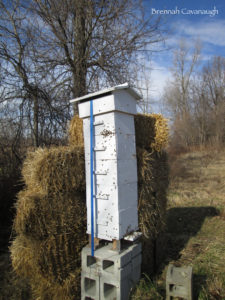
So far this winter, there have been some warm days, but it doesn’t seem to be an overabundance of them. It’s still early, though.

